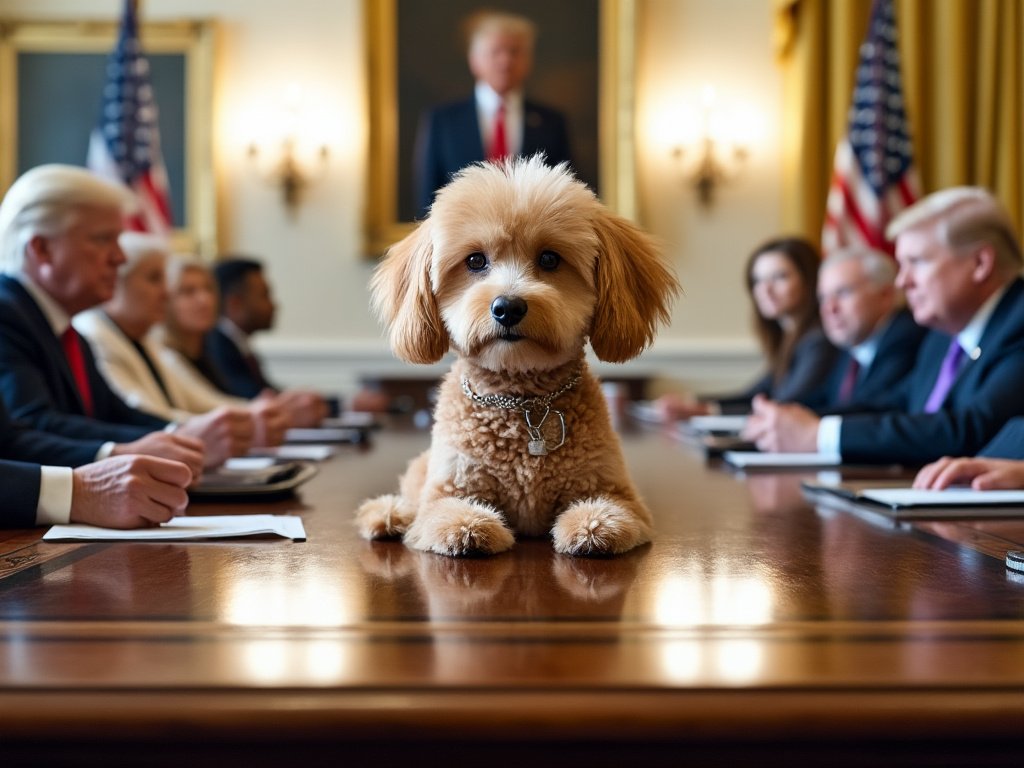Flossi’s First Cabinet Meeting
The composition of the U.S. Cabinet has evolved significantly since the country's founding, reflecting changes in governmental roles, priorities, and the expansion of federal responsibilities. Here’s an overview of how it has transformed over time:
1. The Original Cabinet (1789)
- Established by George Washington, the first U.S. Cabinet had only four departments:
- Secretary of State (Thomas Jefferson)
- Secretary of the Treasury (Alexander Hamilton)
- Secretary of War (Henry Knox)
- Attorney General (Edmund Randolph)
- These positions were designed to handle the primary concerns of the new nation: foreign relations, finances, defence, and legal matters.
2. 19th Century Additions
- As the U.S. expanded geographically and economically, new departments were created to handle specialised areas:
- Navy Department (1798) - Eventually merged with the Department of War to form the Department of Defense in 1947.
Post Office Department (1829): Initially part of the Cabinet, it was reorganised as the independent U.S. Postal Service in 1971.
The Department of the Interior (1849) was created to manage domestic issues such as Native American affairs, public lands, and natural resources.
Department of Justice (1870): Although the Attorney General had existed since 1789, this formally established it as a department.
3. Early 20th Century Expansions
- Rapid industrialisation and progressive reforms led to further Cabinet expansion:
- Department of Agriculture (1889) - Responded to the growing importance of farming.
- Department of Commerce and Labor (1903) - Split in 1913 to create two separate departments as labour issues grew in importance:
- Department of Commerce
- Department of Labor
4. Post-War and Modern Additions (20th Century)
- With the New Deal, WWII, and the rise of modern government, several new departments were established to address the complex needs of a changing society:
- Department of Defense (1947) - Merged the Department of War and the Department of the Navy, adding the newly created Air Force.
- Department of Health, Education, and Welfare (1953) - Later split to form:
- Department of Health and Human Services (1979)
- Department of Education (1979)
- Department of Housing and Urban Development (1965) - Focused on urban issues and housing.
- Department of Transportation (1967) - Created in response to the need for federal transportation oversight.
- Department of Energy (1977) - Addressed the importance of energy policy.
5. Recent Additions and Homeland Security (21st Century)
- The 21st century saw two new departments reflecting national security and veterans' needs:
- Department of Veterans Affairs (1989) - Elevated to Cabinet status to address the growing needs of veterans.
- Department of Homeland Security (2003) - Established in response to the 9/11 attacks, consolidating multiple agencies to protect against terrorism and manage border security.
6. Cabinet-Level Positions Beyond Departments
- In addition to department heads, other positions now hold Cabinet-level status:
- U.S. Trade Representative
- Director of National Intelligence
- Ambassador to the United Nations
- Director of the Office of Management and Budget
- Administrator of the Environmental Protection Agency
- Chair of the Council of Economic Advisers
- Small Business Administration Administrator (sometimes included)
Trends and Observations
- Growth in Number: The Cabinet started with four members and has grown to more than 15 departments and various other Cabinet-level positions.
- Specialization and Complexity: Cabinet positions reflect the specialisation required by a more complex society and government responsibilities.
- Security and Welfare: Recent additions emphasise national security, welfare, and environmental concerns, aligning with modern priorities.





